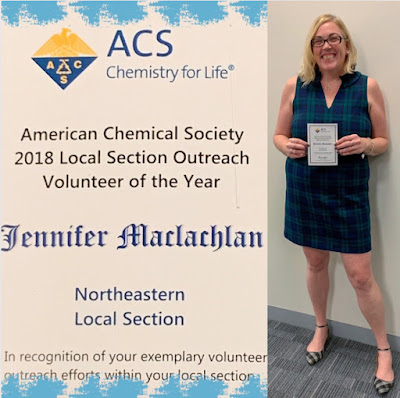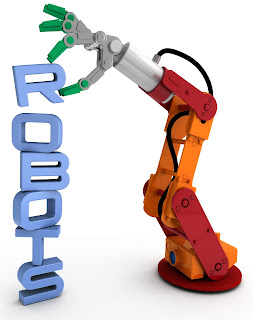The Innovative Project Grant by Jennifer Maclachlan and Mukund Chorghade of the American Chemical Society Division of Small Chemical Businesses was funded by the American Chemical Society Divisional Activities Committee in the August 2018 round of funding.
DECEMBER 19, 2018
Join us for Advancing Innovation and Entrepreneurship: Innovate Now~Launch~Leverage~Lead, an entrepreneurial conference sponsored by the ACS Division of Small Chemical Businesses (SCHB) in partnership with and hosted by the Princeton Section of the American Chemical Society (PACS).
The focus of this conference will be on disruptive innovation, advanced technology, and integrated collaborative networks for R&D and commercialization in the globalized economy. Attendees can join several very distinguished scientists and business leaders who will discuss, parlay, and stimulate ideas on emerging opportunities and their promise and potential: We will gain refreshingly new insights and perspectives from the collective wisdom of the assembled network of thought leaders. SCHB/PACS will illustrate the various growth and developmental opportunities for the younger generation to expand horizons and collaborate sans frontiers.
Wednesday, December 19, 2018 Princeton ACS December meeting
Welcome to Princeton ACS and Meeting Susan VanderKam, Chair, PACS
Introduction to SCHB Peter Lauro, Chair, SCHB
Innovation, Chemistry, and Jobs:
Entrepreneurship Shapes Our Tomorrow Mukund Chorghade, Chair-Elect, PACS
Massively Collaborative Drug Development:
A New Antimalarial Emerges from Academia Spencer Knapp, Professor, Rutgers Univ
Advancing Entrepreneurial Thinking: How an MBA can help Barbara Ameer, Board, PACS
From Blackjack to Entrepreneurship Pam Randhawa
Building your Brand in the Digital Age Jennifer Maclachlan
Chem and Engineering News Promotes Entrepreneurship Michael McCoy, Executive Editor for Business, C&EN
This to be followed by reception / dinner
Reservations: The Symposium is free and but reservations are required. There is a charge of $20 for dinner ($10 for students). To make a reservation go to
Symposium and Dinner Reservation If you have questions email
louise.lawter@gmail.com. The Symposium will be held in Frick Chemistry Laboratory, Princeton University. The lectures will be held in the auditorium (B52) followed by dinner in Taylor Commons (CaFe area). Frick Laboratory is located at the east end of the pedestrian bridge on Washington Rd, adjacent to the Weaver Track and Field Stadium. Visitor parking is available in Lot 21, corner of Faculty Road and Fitzrandolph Road (see
http://m.princeton.edu/map/).
Note: The Symposium and Dinner will also serve as the Princeton ACS Section December Meeting & Year-End celebration!
Speaker Biographies:
Peter C. Lauro of Saul Ewing Arnstein & Lehr, Boston Office Vice Managing Partner and member of the firm-wide Diversity & Inclusion Committee. He is a seasoned patent attorney who focuses his practice in the life sciences, primarily in the biotechnology and organic chemistry fields. He has extensive experience in the areas of patent prosecution and client counseling, including patent portfolio management and development, agency contested proceedings and litigation. Peter has an educational and professional background in the sciences. This experience has augmented his legal practice in fields such as biotechnology, pharmaceutical chemistry and formulations, and materials chemistry. He has helped clients develop patent portfolios related to screening assays, diagnostics, analytical devices, medical devices, genomics, biologics, vaccines, small molecule pharmaceuticals, clean tech and other areas.
Spencer Knapp is a faculty member at Rutgers University. His research accomplishments have comprised natural products total synthesis, new synthetic methods, medicinal chemistry (tuberculosis and malaria), structural bio-inorganic chemistry, and enzyme mechanism and inhibition.Two notable scientific achievements are the development of the GlcNAc-thiazoline inhibitors, which have served as powerful biochemical tools for understanding the action of the human enzymes O-GlcNAcase and N-acetylhexosaminidases (the latter associated with Tay-Sachs and Sandoff’s diseases), and the collaborative development of the ATP4 inhibitor SJ733, now in human clinical trials for malaria. He has received an NCI Young Investigator Award, an American Cyanamid Faculty Award, and a Hoechst-Celanese Innovative Research Award, and chaired the Princeton ACS Fall Organic Symposium in 2003, 2009, and 2014.
Barbara Ameer is a drug development and pharmacology consultant and an Adjunct Associate Professor of Medicine at Rutgers-Robert Wood Johnson Medical School. Prior to that appointment, she was Research Associate Professor at Rutgers in the Department of Chemistry and Chemical Biology. Dr. Ameer earned undergraduate and professional doctorate degrees in pharmacy at University of Connecticut and Virginia Commonwealth University, respectively. She pursued an MBA at Rutgers to complement her science knowledge with coursework and projects involving management, business strategy and entrepreneurship. Over the subsequent 15 years, she applied these learnings during consulting and while interacting with academic colleagues and professional societies.
Pam Randhawa is CEO and Founder of Empiriko, a biotech company focused on developing R&D technologies for drug discovery and home-based point-of-care devices for personalized patient treatment. Pam has 20 years of experience in the healthcare and life sciences industries with expertise ranging from policy, corporate strategy, product development, analytics and marketing for Fortune 500 companies, startups and government. Prior to founding Empiriko, she co-founded AgroGreen Biofuels, an alternative biofuels technology company using agriculture waste. Previously, Pam held several executive positions with major healthcare technology companies. She played on the MIT blackjack team (basis for the movie “21”) as a card counter and an investor.
Jennifer Maclachlan, co-owner of her family owned and operated small chemical business, PID Analyzers, LLC, is responsible for managing relationships with distributors and key clients as well as the web-based marketing, social, and digital media initiatives, of which she was an early adopter. Maclachlan is the Chair of the ACS National Committee on Public Relations and Communications (CPRC) and serves in various Public Relations Communications roles for the ACS. She is a founder of the Cape Cod Science Café, and founding member and organizer of STEM Journey, an award-winning K–12 annual public outreach, day-long. Maclachlan is also the Chair of the American Industrial Hygiene Association’s national task force on Teen Workplace Safety.
Michael McCoy received his B.A. in chemistry and English from Cornell University in 1985. He worked for Chemical Market Reporter, the predecessor to ICIS Chemical Business, for about 12 years before moving to Chemical & Engineering News, the flagship magazine of the American Chemical Society.Today, Michael is C&EN’s Executive Editor for Business, managing a staff of eight business reporters across the globe. Among the features he oversees is C&EN’s annual 10 Start-ups to Watch, a collection of stories about new companies that are commercializing cutting-edge chemistry. The start-ups in the collection are chosen by C&EN’s reporters based on their own knowledge and research and on nominations from C&EN readers and advisors
Mukund Chorghade is President and Chief Scientific Officer, THINQ Pharma / MVRC Research/ Chicago Discovery Solutions. He has had Adjunct Research Professor / Visiting Fellow / Scientists appointments at Harvard, MIT, Princeton, Cambridge, Caltech, Univ. of Chicago, Rutgers, Strathclyde and others. He provides synthetic chemistry and pharmaceutical development expertise to academic laboratories, pharmaceutical and biopharmaceutical companies. His research interests are in Traditional Medicine derived New Chemical Entities and the discovery of “chemosynthetic livers” that find utility in drug metabolism, valorization of biomass and environmental remediation. He was ACS Section Chair (Brazoria 1990) and Northeastern (2007). He is 2018 Chair-Elect of the Princeton Section.
 In 2018, ACS recognized 52 awardees. To read some of the wonderful contributions made by the individuals being acknowledged, follow the link below. https://www.acs.org/content/acs/en/membership-and-networks/ls/grantsawards/local-section-outreach-volunteers/2018.html
In 2018, ACS recognized 52 awardees. To read some of the wonderful contributions made by the individuals being acknowledged, follow the link below. https://www.acs.org/content/acs/en/membership-and-networks/ls/grantsawards/local-section-outreach-volunteers/2018.html








































